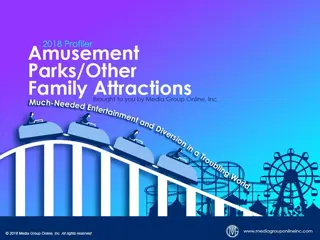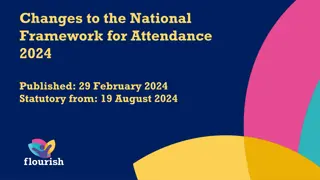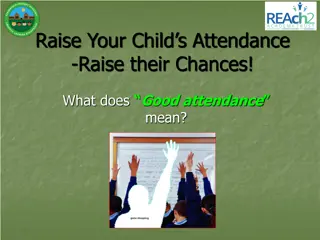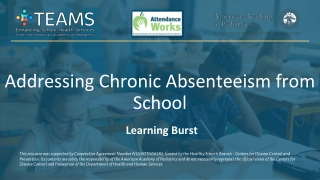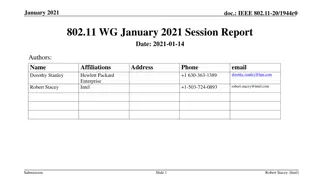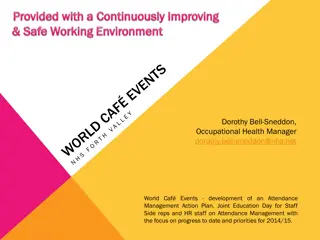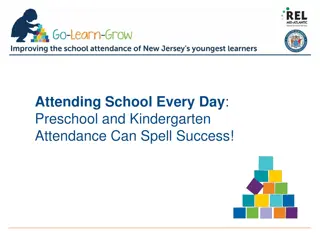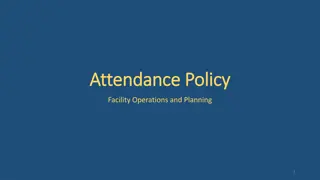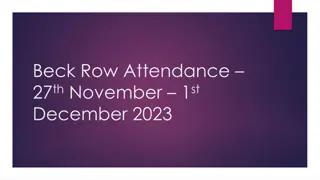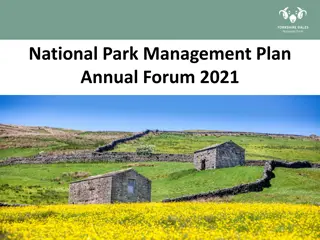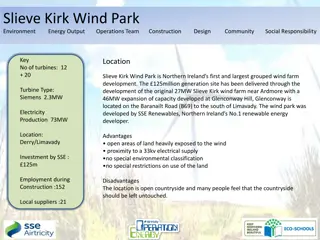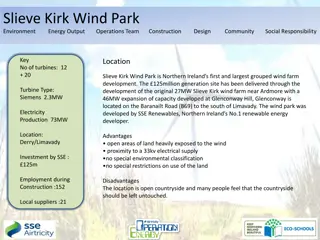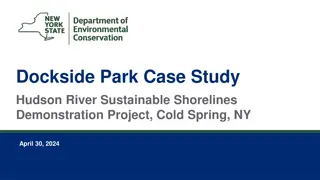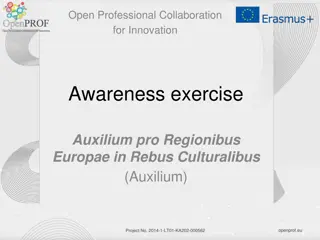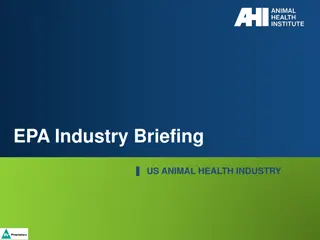Theme Park Industry Trends: Attendance on the Rise
Attendance at the top global theme park groups rose by 5.4% in 2018, surpassing 500 million visitors for the first time ever. Disney led the pack with the Magic Kingdom attracting the most visitors. The industry is focusing on immersive IP attractions to meet guest expectations. Waterparks also saw a modest increase in attendance, with new additions boosting visitor numbers. Major parks are expanding with new attractions like Star Wars: Galaxy's Edge and Hagrid's Magical Motorbike Adventure. Regional parks are also gearing up to compete for visitors.
Download Presentation

Please find below an Image/Link to download the presentation.
The content on the website is provided AS IS for your information and personal use only. It may not be sold, licensed, or shared on other websites without obtaining consent from the author. Download presentation by click this link. If you encounter any issues during the download, it is possible that the publisher has removed the file from their server.
E N D
Presentation Transcript
Breaking the Half-Billion Visitor Mark Worldwide After a robust attendance increase of 8.6% for the top 10 worldwide theme park groups during the 2017 season, they recorded another healthy gain for 2018, or +5.4%, but, more importantly, total attendance exceeded 500 million for the first time ever. Disney dominated with 8 of the top 10 amusement/theme parks by attendance, with 5 in the US, 2 in Japan and 1 in China. Disney s Magic Kingdom Theme Park at Walt Disney World Resort in Florida had the largest attendance, or 20.86 million. Disney was the tops in 2018 North American attendance, with the first 5 parks in the region, and 6 total. Universal grabbed the #6, #8 and #9 positions and SeaWorld Orlando rebounded with a #10 position and a 16.0% increase in attendance.
Give Visitors What They Want and They Want More As the major parks continue to add more immersive IP (Intellectual Property) attractions, such as The World of Avatar, Toy Story, etc., guests are expecting these kind of experiences to be common, which is challenging for smaller parks. According to PGAV Destinations Voice of the Visitor 2019, good value for the money is still the top attraction attribute, at 79%, closely followed by a clean place to visit, 78%; friendly staff members, 71%; and provide a safe and wholesome environment, 70%. Among the 20 types of attractions Americans plan to visit during 2019, waterparks is tie for second at 79% while theme parks/amusement parks is #14 at 72%.
Waterparks Riding a New Wave of Success Following a modest 1.6% increase in global attendance for the top 20 waterparks during the 2017 season, or 30.2 million visitors, parks welcomed 30.9 million during 2018, or a 2.6% increase. Although Florida and California totally dominated the theme park category in the US, 14 of the top 20 North American waterparks are found in the Northeast, South, Midwest and Texas, with 5 in Florida and 1 in California. Better weather than 2017 and new attractions, such as Zoombezi, Powell, OH; Typhoon Texas, Katy, TX; Adventure Island, Tampa, FL; and Splish Splash, Calverton, NY, all helped the sector increase 2018 attendance significantly.
Making More Room for New Attractions The new Star Wars: Galaxy s Edge attraction at Disneyland in California was the #1 topic among the public and media and it opened to capacity crowds during late June; however, attendance then reportedly became sparse and throughout the park. That isn t stopping the Disney empire from growing, as construction has started on Marvel Land in Disneyland and numerous closings at Disneyworld announced for the end of the summer to make room for 14 new editions to Epcot during the next 3 years. Hagrid s Magical Motorbike Adventure was Universal Orlando s big, new attraction for summer 2019, but it was closed indefinitely during mid-June for technical issues. Nonetheless, Universal is moving ahead with 3 major, future projects.
Regional Parks Ready to Compete for Visitors Cedar Park is acquiring two of the most well-known water parks in Texas, Schlitterbahn Waterpark and Resort New Braunfels and Schlitterbahn Waterpark Galveston, for $261 million. Dollywood s new addition, Wildwood Grove, is the largest in the history of the park, increasing its size by 20% at a cost of $37 million. Dragonflier, a 1,468-foot suspended roller coaster, is one of the many new rides and attractions. August 2019 will mark the 140thanniversary of Seabreeze on the shores of Lake Ontario just north of Rochester, NY. It s North America s fourth oldest amusement park and was a Travelers Choice Top 25 Amusement Park in North America for 2018.
Advertising Strategies For local and regional parks to remain competitive, they must aggressively use traditional media, TV specifically, to create stronger brand awareness and connect with families with children. Local and regional parks should also consider collaborative promotions with complementary businesses, such as convenience stores and casual fashion stores, that feature some kind of combo package at a discounted price and/or distribution of coupons for the other store. Local and regional parks may want to explore working with local employers to create an ABC Company Day, with discounted admissions with a qualifying number of employees/guests, a private picnic onsite and bus transportation from and to the business.
New Media Strategies Most parks feature photos and videos online of guest activities and fun, but short videos with an employee host explaining how to maximize one s enjoyment of each ride and attraction could also serve as appealing social media content. As local and regional parks add new rides and attractions, consider conducting a social media contest to create names for them, with appropriate prizes for participants and winners. Similar to the insights in the Zoos & Aquariums 2019 Profiler, amusement parks must consciously create and aggressively market promotions that target minority audiences, especially older adults who visit at lower rates than older Caucasian Americans.


